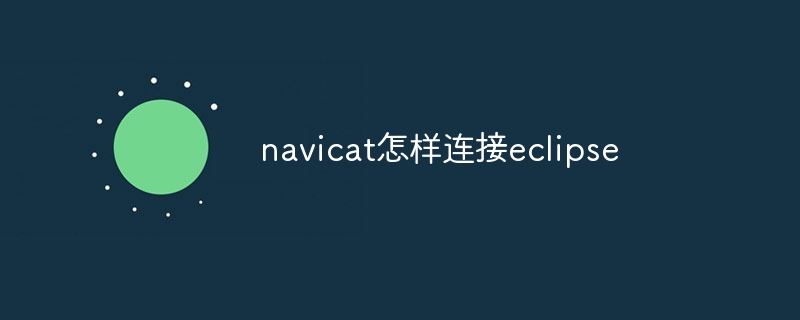How to connect navicat to eclipse
- 下次还敢Original
- 2024-04-23 16:48:15924browse
To use Navicat to connect to Eclipse, you need to perform the following steps: Install the Navicat MySQL connector. Configure MySQL connection in Navicat. Add Navicat connection to Eclipse. Connect using Navicat in Eclipse.

How to use Navicat to connect to Eclipse
Step 1: Install Navicat MySQL connector
- Open Eclipse and navigate to "Help" > "Install New Software".
- In the "Work with" field, enter "https://dl.navicat.com/eclipse".
- Select "Navicat MySQL Connector" and click "Install".
Step 2: Configure Navicat connection
- In Navicat, create or open a MySQL connection.
- Right-click the connection and select "Edit Connection" or "Properties".
- In the "Connection" tab, click the "JDBC URL" button.
- In the "JDBC URL" text box, enter:
<code>jdbc:mysql://[主机地址]:[端口]/[数据库名]</code>
- For example:
jdbc:mysql://localhost:3306/mydb
Step 3: Add Navicat connection to Eclipse
- In Eclipse, navigate to Window>Preferences>Database Management">"Databases".
- Click the "New" button.
- In the Database Configuration dialog box, enter:
- Database name: A name of your choice
- Connection type: MySQL
- Host: Same host address as in Navicat
- Port: Same port as Navicat
- Database: The same database name as in Navicat
- Username: Username used to connect to the database
- Password: Password used to connect to the database
- Click the "Connection Test" button to verify the connection.
- If the connection is successful, click "OK".
Step 4: Connect using Navicat
- In Eclipse, expand the Database Explorer view.
- Right click on the database connection you just created.
- Select "Connect" to open the connection.
The above is the detailed content of How to connect navicat to eclipse. For more information, please follow other related articles on the PHP Chinese website!
Statement:
The content of this article is voluntarily contributed by netizens, and the copyright belongs to the original author. This site does not assume corresponding legal responsibility. If you find any content suspected of plagiarism or infringement, please contact admin@php.cn
Previous article:How does navicat know the password?Next article:How does navicat know the password?

